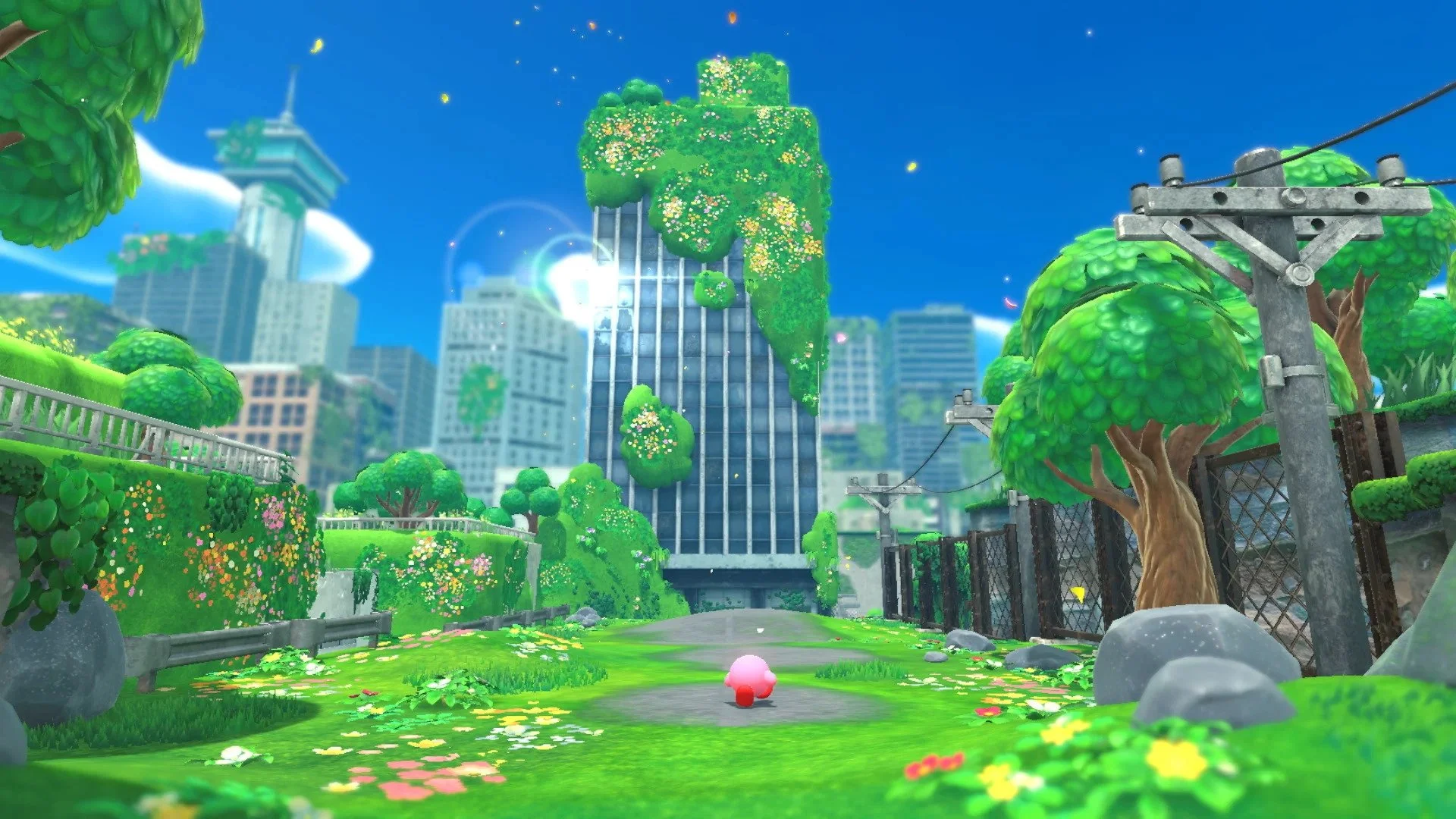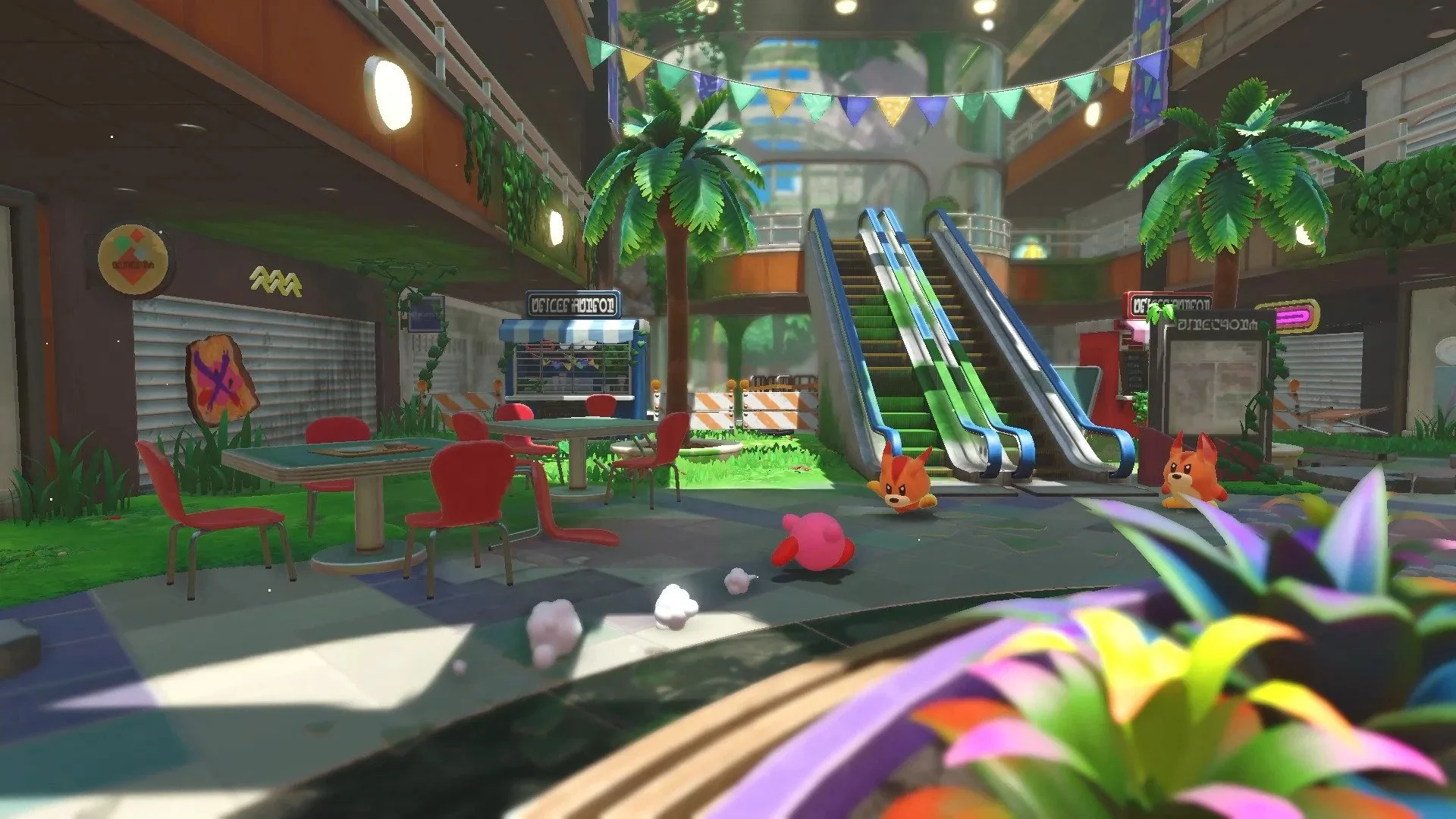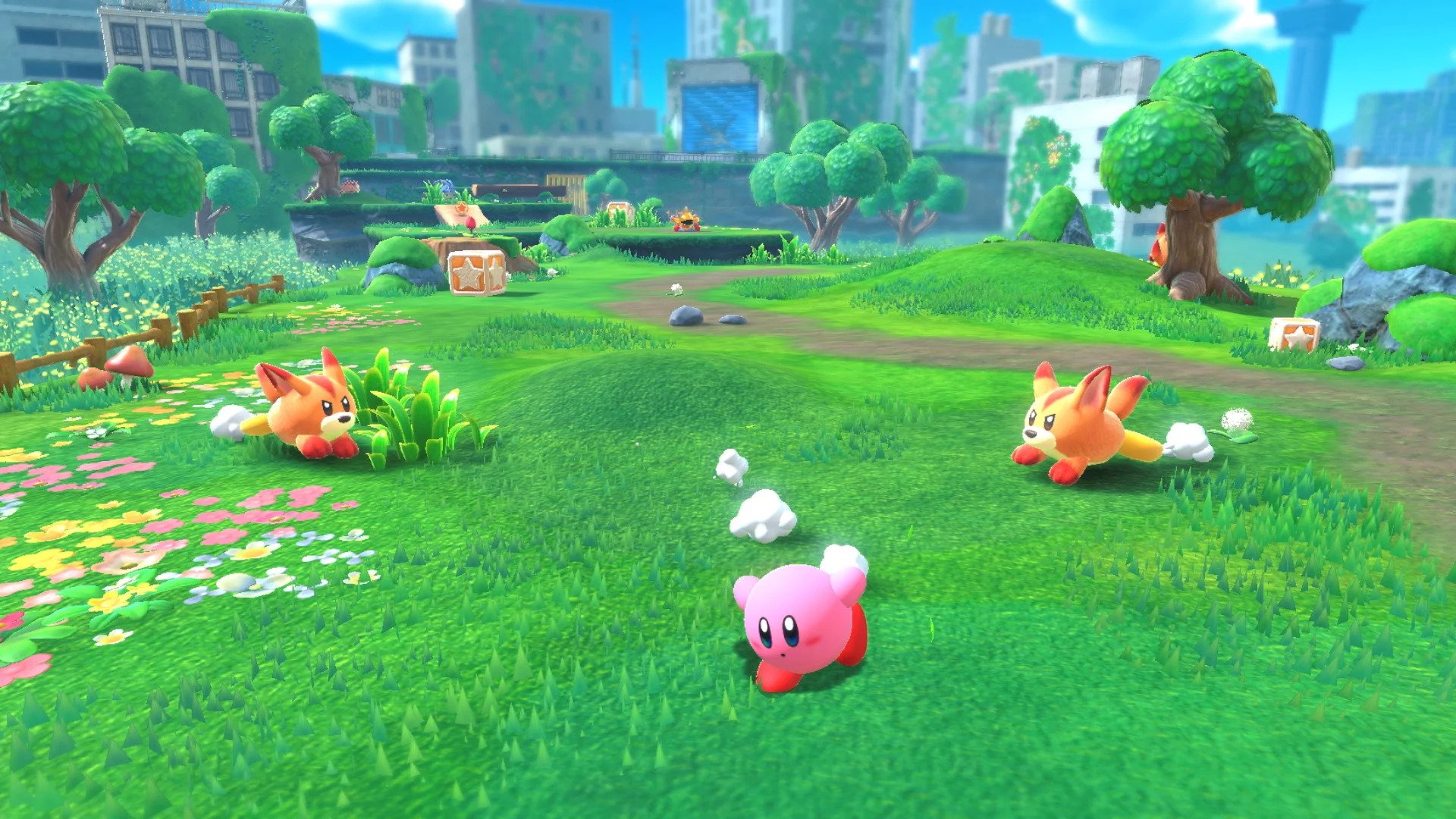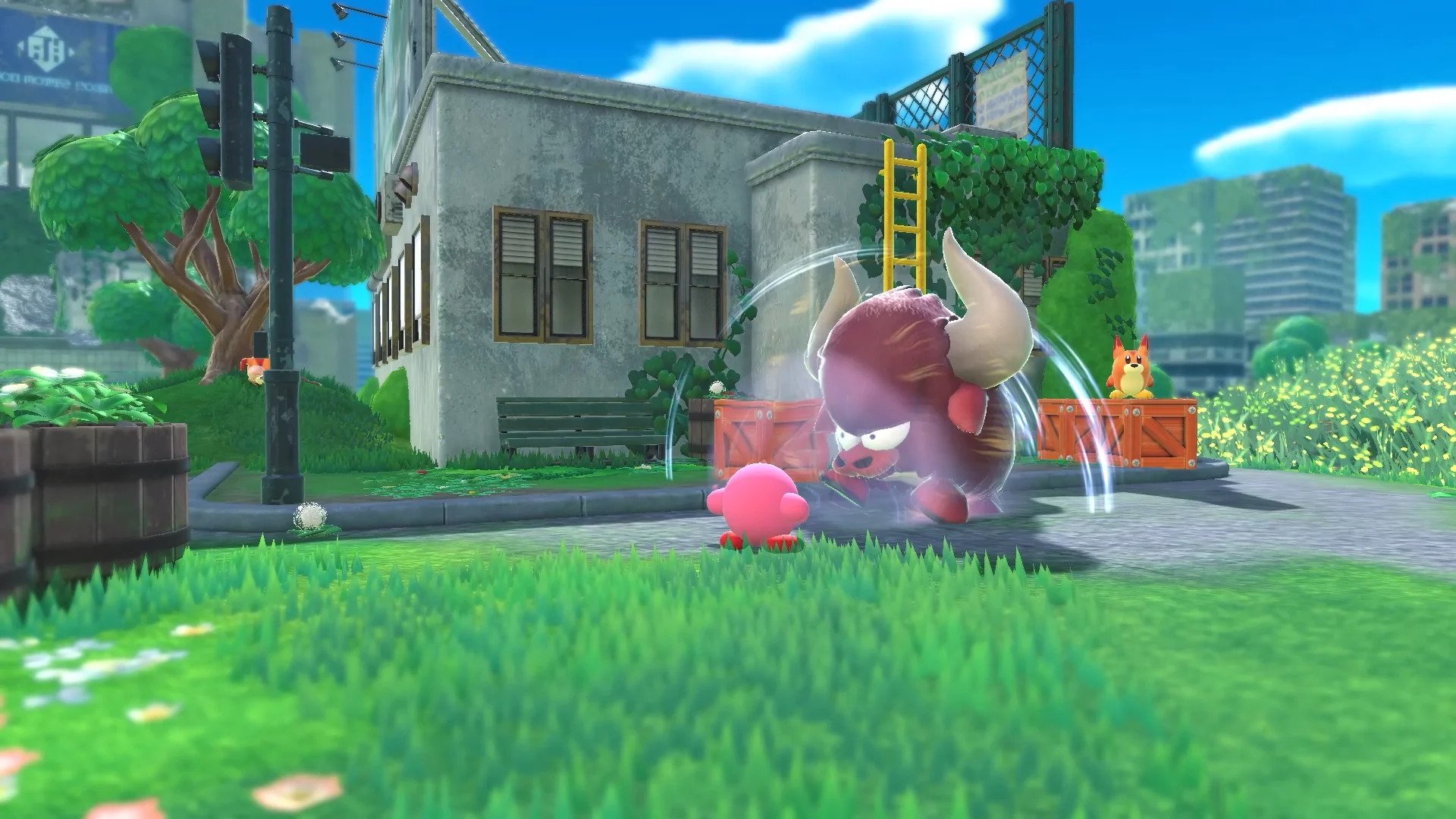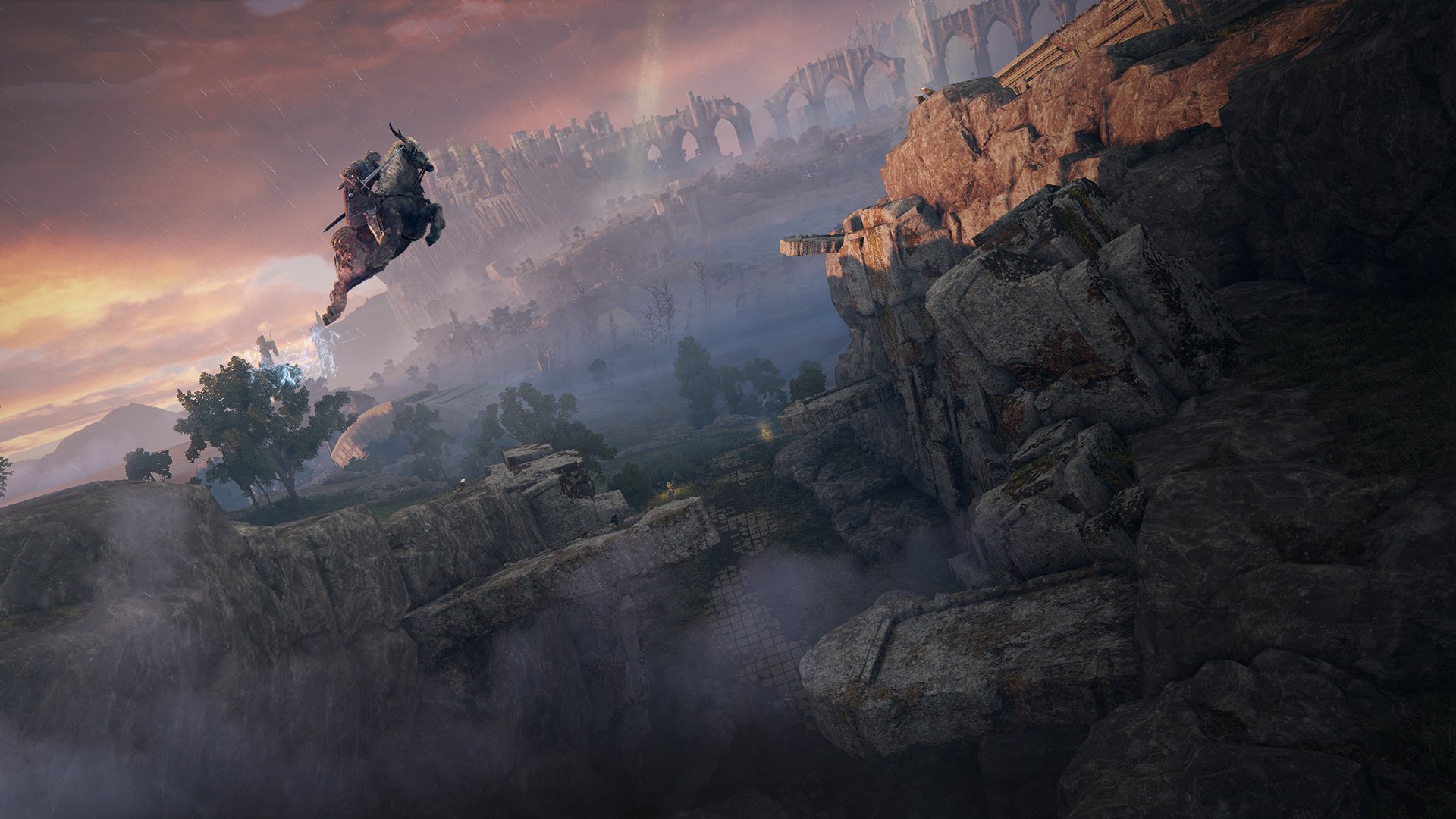Cutest Apocalypse Ever: Kirby and the Forgotten Land
Christian Haines, Managing Editor
Kirby enters an abandoned mall, but there are no zombies. Not a single undead creature. Not even a pile of corpses. I suppose it’s to be expected. Decaying flesh wouldn’t fit the shiny surfaces and pastel colors of Kirby and the Forgotten Land. It would violate the unspoken rule of the game: everything – enemies included – must be cute.
The levels in the first area of Kirby and the Forgotten Land, “Natural Plains,” looks like they might have been borrowed from Last of Us Part 2. Crumbling skyscrapers, crumpled soda cans, and broken-down cars make up the stages, but whereas Last of Us imbued its abandoned cityscapes with a haunting tone, Kirby makes them cheerful, light-hearted, bubbly. It’s the cutest apocalypse ever.
I’m certainly not the first critic to remark on this tonal dissonance, this strange combination of cheer and ruin. But is it really tonal dissonance? It’s easy while you’re playing Kirby and the Forgotten Land to simply, well, forget the apocalypse. Yes, there is evidence of the world’s former human inhabitants, but Kirby is no archaeologist. He doesn’t dig up the past or examine relics. He sucks things up, spits things out. He floats. He frees big-eyed Waddle Dees.
How did we get to a point where the apocalypse could be so … cute? An obvious answer is cultural saturation: apocalyptic scenarios have become so commonplace that they’ve lost their ominous charge. The end of civilization doesn’t feel very much like an ending. In the best case, it’s a backdrop for interesting meditations on art, ethics, and politics, as in novels like Station Eleven and Severance. Usually, though, apocalyptic media stagnates; it recycles survivalist tropes and fantasizes about returning to a primal state of nature (“where a man can be a man”). To its credit, Kirby and the Forgotten Land floats above these narrative and thematic dead-ends; it avoids exhaustion with all things apocalypse by making the apocalypse cute.
But what is cute? In Our Aesthetic Categories, Sianne Ngai describes cuteness in aesthetic terms, that is, in terms of its artistic properties and the sensations it elicits from viewers. Cuteness, writes Ngai, “solicits a regard of the commodity as an anthropomorphic being less powerful than the aesthetic subject, appealing specifically to us for protection and care.” When something’s cute, it’s an object that we want to touch, that we want to grasp, shelter, cuddle. The cute object is vulnerable. It’s also pitiful, pathetic, maybe even a little disgusting. Cute things are soft and lumpy. They’re bright, maybe even too bright. Their bodies are exaggerated.
Kirby is cuteness. Pink, puffy, big-eyed, and wispy, Kirby embodies the knife’s edge that separates the cute from the grotesque. Kirby is so cute, it hurts. As Ngai explains, cuteness can turn on you: the cute thing seizes your attention with such force that it strips you of agency, like an adorable child bossing around her parents with the skill of a dictator.
Kirby and the Forgotten Land is more than testament to apocalypse burnout. It’s an exercise in approaching the apocalypse from a different angle. Postapocalyptic wastelands serve as lessons in the vulnerability of human beings. They measure the fragility of life and, in doing so, they compel us to weigh our values, to rank our cares and concerns. Survival is a harsh master. In contrast, Kirby floats through the Forgotten Land with relative ease. The levels in the game gesture towards the ruins of civilization, but they are full of cute gimmicks – charming one-off mechanics and adorable environmental mini-narratives. Kirby and the Forgotten Land transfers the vulnerability of the survivor onto the wasteland; it inverts the violence of the apocalypse, turning the shattered shell of society into a joyful playground. The game is saccharine, so sweet it makes your teeth hurt, but it’s also impossible to resist: who doesn’t want the end of things to be so joyful?
Kirby is the agent of the cuddly apocalypse. He’s the harbinger of a doom to which we can’t help but succumb. But he’s also a fantasy of survival, a dream of resilience. Kirby does what we can’t: he floats through the wasteland with barely a care in the world. He’s elastic; he can take it and he can dish it out. He sucks up anything that threatens him—a mouth to end all violence, a shapeshifting demon wielding swords and boomerangs, fire and ice. A power fantasy? Perhaps, but only if we accept the paradox that Kirby’s power over his environment is synonymous with his vulnerability: he’s soft and squishy, malleable yet consistent. Kirby turns cuteness into the fantasy of being vulnerable without being annihilated. It’s an Anthropocene lesson, a lesson for the rolling apocalypse the human species already inhabits.
Sure, Hal Laboratory could have made Kirby and the Forgotten Land a thoughtful meditation on climate change or environmental destruction. Instead, it offered something strange and wonderful: the fantasy that we might swallow the apocalypse whole.

